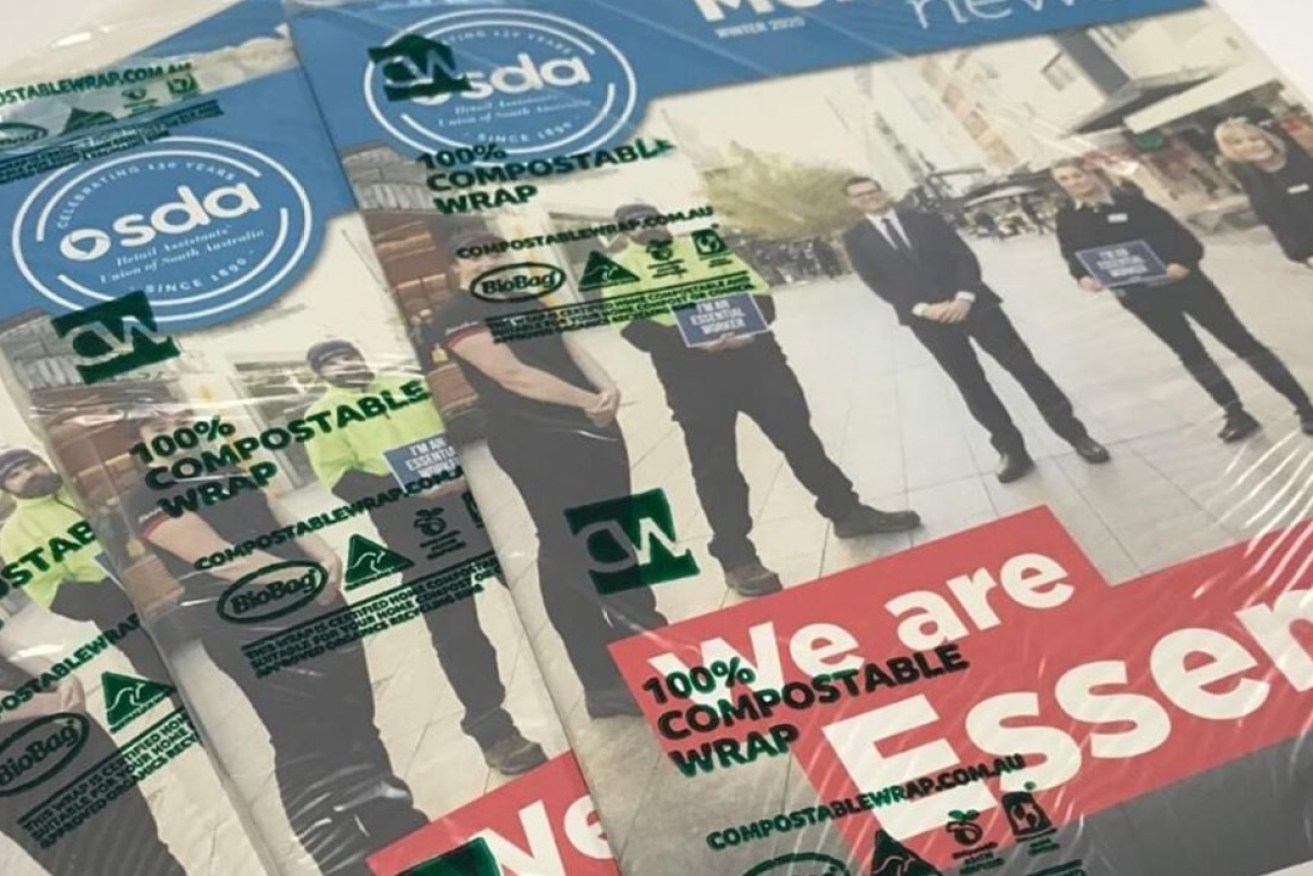Compostable cucumber wrap adapted for magazines
A compostable shrink-wrap developed in South Australia for cucumbers has been adapted to magazine film opening up a potentially huge market for its Adelaide manufacturer.


BioBag's compostable magazine film can be broken down in the home compost. Image: supplied.
The alternative plastic wrapping was invented by Adelaide-based compostable bag producer BioBag World Australia last year with a number of supermarket chains now using the product for fruit and veg.
The bio-wrap was first used on cucumbers sold at South Australian independent grocer Drakes Supermarkets following a partnership with produce and packaging business IG Fresh Produce.
Company managing director Scott Morton said the development of the plastic alternative mailing film was the result of a partnership with South Australian-based Direct Mail Centre of Australia.
“It took us about a month to develop the first film wrap, which was an industrial compost version,” Morton said.
“We then tried to take it one step further and we created a new version which was suitable for home compost … so that even outside of South Australia, where industrial compost isn’t necessarily available, we would have a solution.”
The cucumber wrap was launched in September as an environmentally friendly alternative to the traditional polyethylene plastic wrap and has since been adapted for a range of uses – most recently as a magazine film.
BioBag World Australia’s bioplastic film is made from a compostable resin called Mater-Bi that uses substances obtained from plants including non-genetically modified corn starch.
The company’s Adelaide operation is the Australian base of BioBag World, which is headquartered in Norway and has a number of other subsidiaries around the globe.
According to the State Government’s environmental services body Green Industries SA, plastic production rose from 15 million tonnes in 1964 to 311 million tonnes in 2014 and is estimated to weigh almost the same amount as the entire human population.
Green Industries SA expects plastic waste to double in the next 20 years.
In a bid to reduce the state’s plastic consumption, last year the South Australian government introduced draft legislation to ban a range of single-use plastic products – including straws, cutlery and stirrers – with a bill to be introduced to parliament later this year.
It is also considering a plan to phase out items such as takeaway coffee cups and reusable plastic bags.
Direct Mail Centre of Australia director Chris Lawson said the decision to move into home compostable film was part of an overall strategy to use entirely environmentally-friendly products.
“Being in the direct mail industry, it’s not really a growth industry,” Lawson said.
“It’s been declining with the postage increases and a lot of other variable factors that have been impacting our industry. So, what we identified was diversification into greener alternatives and that led me to investigate compostable alternatives to the regular plastic wrap that we use.
“In the past we were using the oxo-degradable plastic and now we’re trying to make that shift across to 100 per cent compostable wrap.”
The Australian Competition and Consumer Commission has previously labelled oxo-degradable plastics misleading.
It said while oxo-degradable products may fall into the biodegradable plastic category they break into smaller microplastics, which move more easily through the environment.
According to KESAB, compostable products, on the other hand, are made from plant-based materials, breaking down during the compostable process.
KESAB environmental services officer Brian Jonston told InDaily while the organisation sought to reduce waste production wherever possible, compostable products were the greenest choice.
“Having a compostable product versus a film is better in that it can be turned into a compost and go into a green bin,” Jonston said.
“It won’t sit around for a long time in landfill, it won’t end up in the environment sitting around and causing a problem there, so from that point of view it’s a better choice – as long as it’s still required.
“If there’s the option to never produce something in the first place, then that is the best option. It conserves our precious recourses, it stops it from potentially becoming a litter issue and the decision doesn’t have to be made about its fate.
“But we recognise there are reasons for these things. So, if there has to be, always make the best choice in terms of the material.”
Lawson said the company had its first order of the home compostable film delivered in June and, in the last month, had used about half a tonne of the product for a range of local and interstate magazines.
He expected to use one tonne of the film a month and said while the product cost “a couple of cents extra” per magazine he thought the environmental benefits outweighed the “few extra dollars”.
Want to comment?
Send us an email, making it clear which story you’re commenting on and including your full name (required for publication) and phone number (only for verification purposes). Please put “Reader views” in the subject.
We’ll publish the best comments in a regular “Reader Views” post. Your comments can be brief, or we can accept up to 350 words, or thereabouts.




